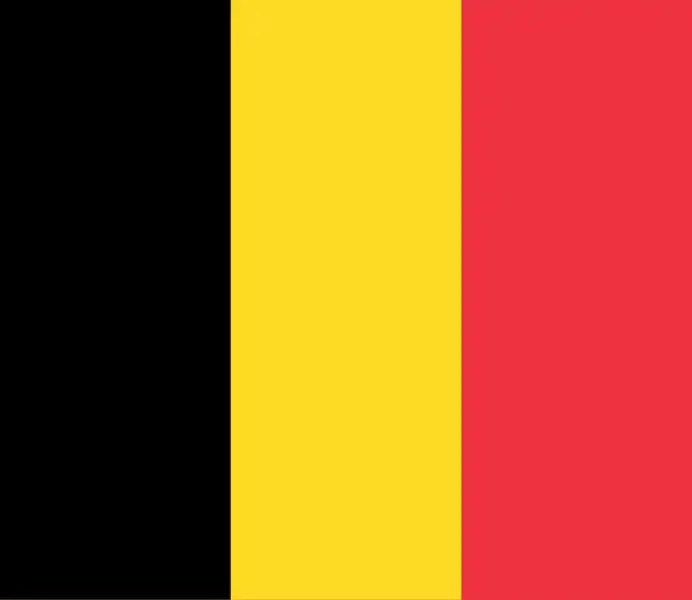Belgium - statistical data
Belgium is a small country located in Western Europe, bordered by France, Germany, Luxembourg, and the Netherlands. It has a total area of approximately 30,500 square kilometers, making it one of the smallest countries in Europe. The landscape of Belgium is characterized by flat coastal plains in the northwest, rolling hills in the central region, and the densely forested Ardennes mountains in the southeast.
With a population of around 11.5 million people, Belgium is one of the most densely populated countries in Europe. The majority of the population resides in urban areas, with the largest cities being Brussels, Antwerp, and Ghent. Belgium has a diverse population, with the three main linguistic groups being Dutch-speaking Flemish in the north, French-speaking Walloons in the south, and a small German-speaking community in the east.
Land of Belgium
Belgium is a land of rich cultural heritage and historical significance. With its diverse landscapes, from rolling hills to flat plains, Belgium offers a unique blend of natural beauty. The country is also known for its medieval architecture, with stunning cathedrals and castles scattered throughout the countryside.
One of the most notable features of Belgium is its culinary tradition. The country is famous for its delicious chocolates, waffles, and beers, which are enjoyed by locals and tourists alike. Belgium is also home to a thriving art scene, with renowned artists such as Rene Magritte and Pieter Bruegel hailing from the region.
In addition to its cultural and culinary offerings, Belgium is a hub of political activity, serving as the headquarters of the European Union and NATO. The country plays a key role in international affairs and is known for its commitment to diplomacy and cooperation. Overall, Belgium is a fascinating land with much to offer in terms of history, culture, and innovation.
Climate of Belgium
Belgium experiences a temperate maritime climate characterized by mild winters and cool summers. The country is influenced by the North Sea and the Atlantic Ocean, which moderate its temperatures throughout the year. The average annual temperature in Belgium ranges from 8°C to 11°C, with January being the coldest month and July the warmest. The climate is also marked by high humidity and frequent rainfall, particularly in the fall and winter months.
The weather in Belgium is known for its variability, with rapid changes in temperature and precipitation. The country can experience periods of heavy rainfall and strong winds, especially during the winter months. Summers in Belgium are relatively mild, with average temperatures ranging from 18°C to 22°C. The climate is also influenced by its geographical location, with the Ardennes region in the south experiencing cooler temperatures and more precipitation compared to the coastal areas in the north. Overall, the climate of Belgium is characterized by its moderate temperatures, high humidity, and variability throughout the year.
Languages of Belgium
Belgium is a multilingual country with three official languages: Dutch, French, and German. Dutch is the most widely spoken language in Belgium, predominantly in the northern region of Flanders. French is spoken in the southern region of Wallonia, while German is spoken in a small community in the east. The linguistic diversity in Belgium is a reflection of its complex history and unique cultural heritage.
The linguistic landscape of Belgium is not only defined by its official languages but also by a variety of regional dialects and languages. These include Walloon, a Romance language spoken in Wallonia, and Picard, a Romance language spoken in parts of Wallonia and Picardy in France. Additionally, there are several immigrant languages spoken in Belgium, such as Arabic, Turkish, and Italian, due to the country's history of immigration.
Overall, the languages of Belgium play a significant role in shaping the country's identity and cultural landscape. The coexistence of multiple languages in Belgium highlights the country's commitment to linguistic diversity and inclusivity. This linguistic diversity is celebrated through various cultural events, language education programs, and government initiatives aimed at preserving and promoting the linguistic heritage of Belgium.
Demographic trends
Belgium is experiencing significant demographic trends that are shaping the country's population dynamics. One notable trend is the aging population, with a growing number of elderly individuals in comparison to younger age groups. This shift is attributed to factors such as increased life expectancy and declining birth rates. As a result, Belgium faces challenges related to healthcare, pension systems, and labor force participation.
Another demographic trend in Belgium is the increasing cultural diversity within the population. Migration flows have contributed to a more diverse society, with a growing number of foreign-born residents and individuals with diverse ethnic backgrounds. This trend has implications for social cohesion, integration policies, and cultural dynamics within the country. Additionally, urbanization is another key demographic trend in Belgium, with a growing concentration of the population in urban areas. This trend is driven by factors such as economic opportunities, infrastructure development, and lifestyle preferences.
Overall, these demographic trends in Belgium highlight the complex interplay of factors shaping the country's population structure and dynamics. Understanding and addressing these trends are crucial for policymakers, researchers, and stakeholders to effectively plan for the future and ensure sustainable development in the face of demographic challenges.
Belgium interesting facts
Belgium, a country known for its rich history and cultural heritage, is also home to some fascinating facts that set it apart from other nations. One interesting fact about Belgium is its renowned chocolate industry, with the country producing some of the finest chocolates in the world. Belgian chocolate is often considered a delicacy, with a long tradition of craftsmanship and quality that dates back centuries.
Another interesting fact about Belgium is its diverse linguistic landscape, with three official languages spoken in different regions of the country: Dutch, French, and German. This linguistic diversity reflects Belgium's complex history and political structure, adding to its cultural richness and diversity.
